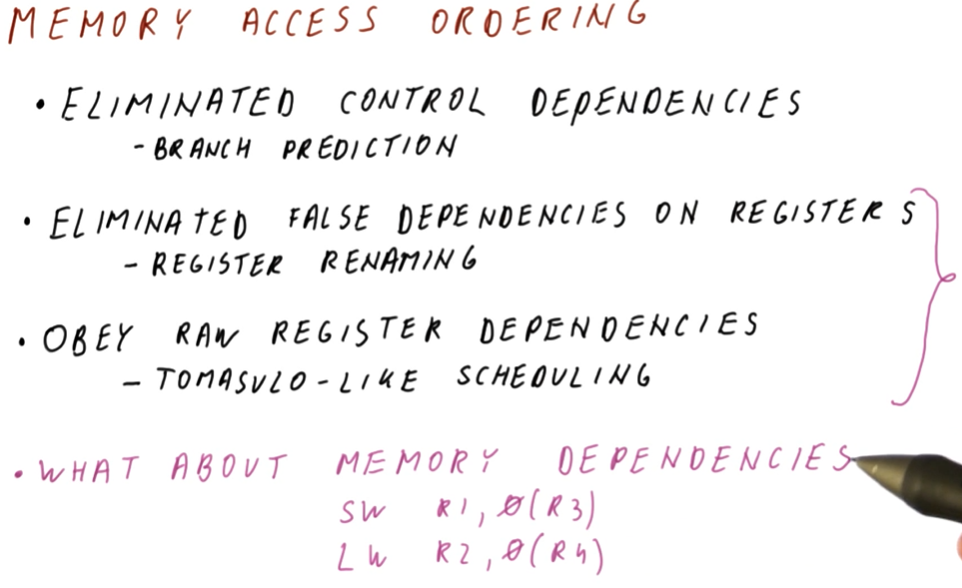Memory Ordering
In previous lectures we have seen that processors conducting out-of-order execution can track when instructions use registers populated by preceding instructions. In contrast, load and store instructions can reference values located in memory, so how does a processor de-conflict load and store accesses to values in memory when conducting out-of-order execution?
The notes for this lecture can be found here
Memory access ordering
So we've already demonstrated that we can resolve control dependencies by implementing good branch prediction. We have eliminated false data dependencies for registers using register renaming. We have also shown that out-of-order execution can respect RAW or true dependencies by using Tomasulo-like scheduling of instructions in reservation stations.
The two techniques we have used to eliminate data dependencies are only applicable to operations involving registers. We still have to resolve dependencies that manifest when conducting load and store instructions on the same locations in memory. How do we execute these instructions out-of-order?

Memory writes
For store instructions, knowing when memory writes actually happen is
important. Memory writes actually happen when an instruction commits.
Memory writes only happen when a commit takes place for an instruction
because it is dangerous to do so, otherwise. If we wrote to memory prior to an
instruction committing, that information could be written but the instruction
could be cancelled due to something like branch mis-prediction or an exception.
To resolve this issue, we delay memory writes and stores until the instruction is committed.
So where and when do load instructions get their data? We want load
instructions to get their data as soon as possible. Do they always have to wait
until every store instruction commits?
To resolve this issue, computer architects implement a load-store queue
structure to keep all load and store instructions. More on this in the
next section.